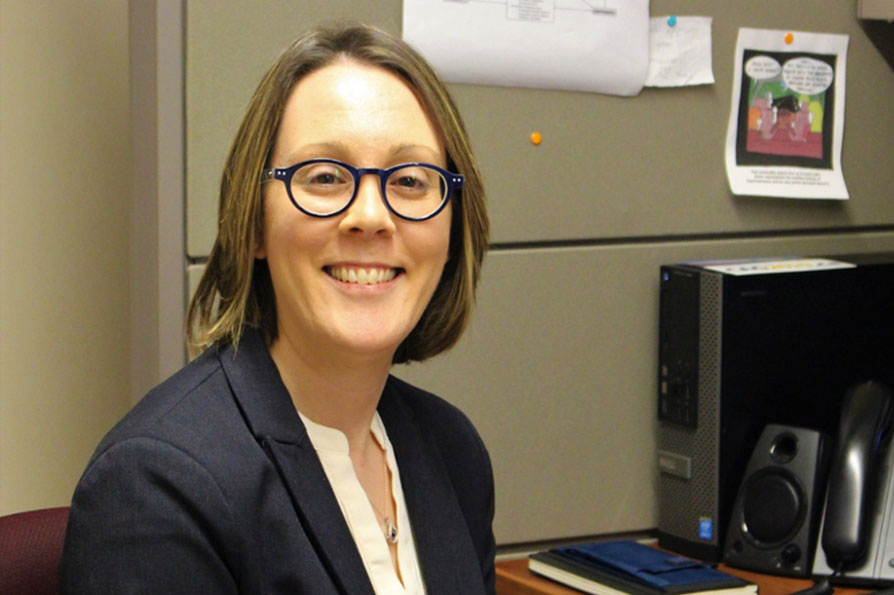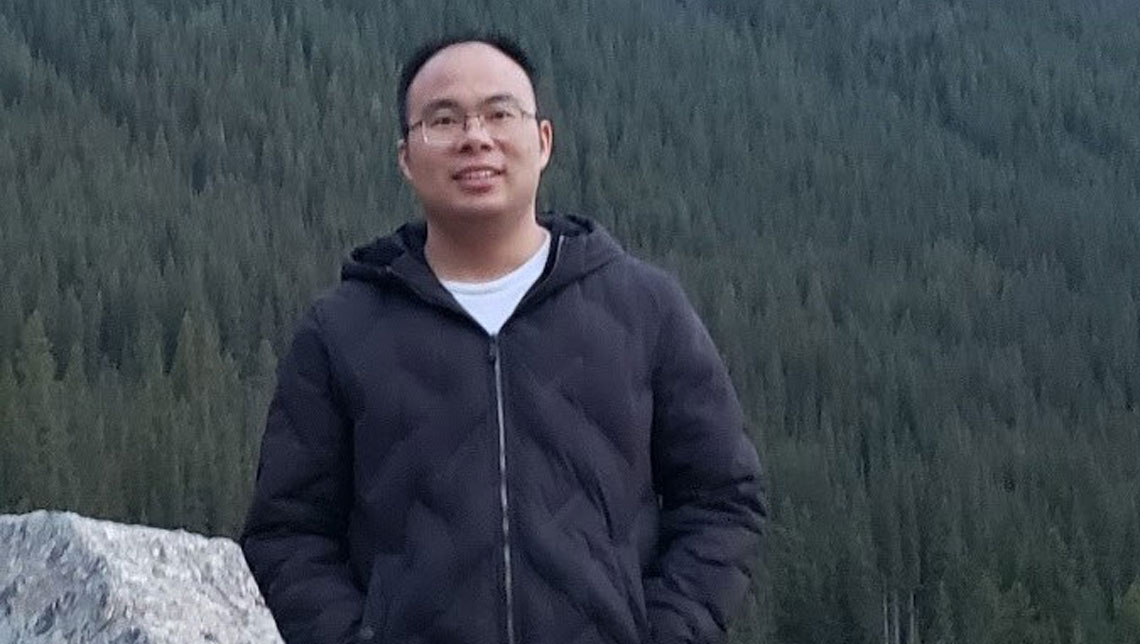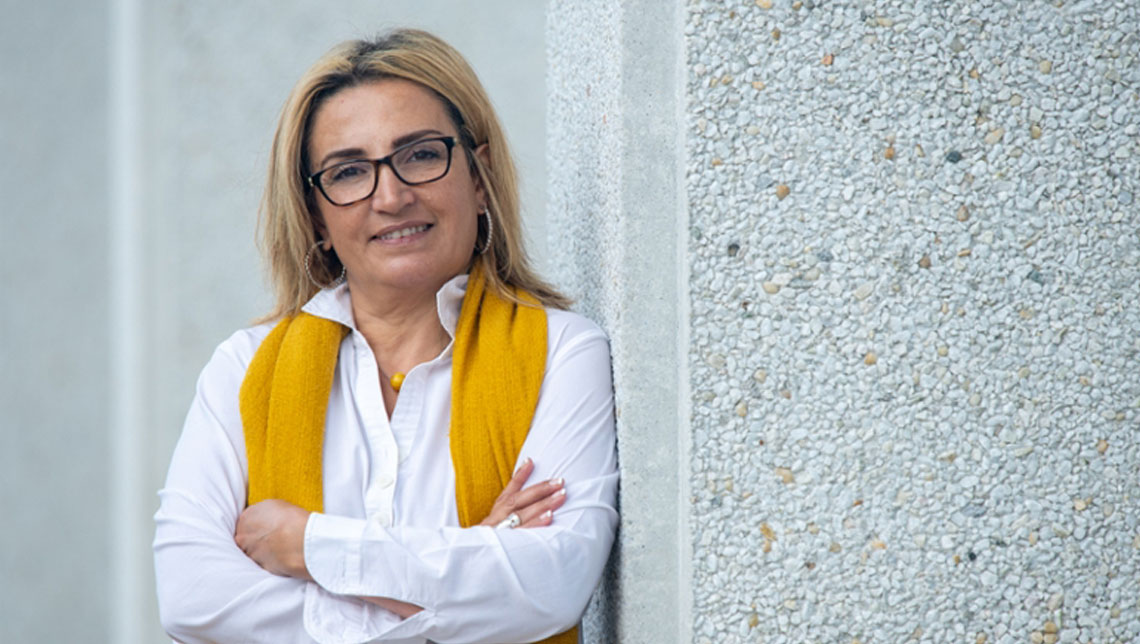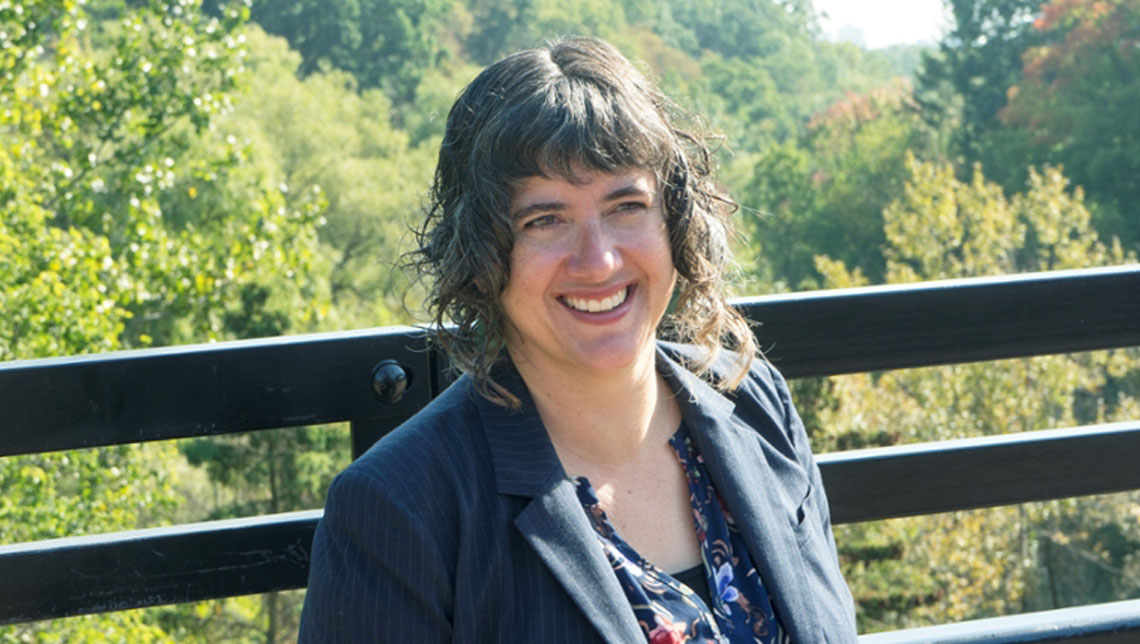Research with Impact
ALUMNI NEWS MAGAZINE | Fall 2022

Dr. Catherine Bigonnesse will work to develop evidenced-based healthy aging policies and decision-making tools for the Atlantic provinces.
"My name is Dr. Catherine Bigonnesse. I’m an assistant professor of political science at UNB, and the new Canada Research Chair in Healthy Aging.
I study environmental gerontology, a subfield of aging research interested in understanding how the environment – built or natural environment, people, organizations – influences the well-being of older adults. My specific expertise is related to aging in place, the meaning of home in later life, innovative housing and community-based services for older adults, and age-friendly communities." Read more
Dr. Chris Folkins (BSc’03), research scientist at the New Brunswick Institute for Research, Data and Training, uses administrative data to study population health and health services in New Brunswick. One of his recent projects studies the outcomes of low access to physician care. This work will provide insight into how deficits in access to primary care are affecting the health of New Brunswickers and the sustainability of the province’s health-care system, and is anticipated to underscore the importance of connecting more New Brunswickers with primary care providers.
By quantifying the health and economic toll of primary care deficits in the province, the research results will help inform and prioritize policy decisions surrounding health system management and spending. Read more. Watch his presentation.
How can stories help parents and children navigate a child’s identity and development? That’s a question two UNB education researchers — Dr. Pam Whitty (BEd’76, MEd’84) and Dr. Pam Malins — sought to explore in their recent project.
Their article, Families’ comfort with LGBTQ2S+ picturebooks: Embracing children’s critical knowledges, was published in the Waikato Journal of Education. It shares the research that Drs. Whitty and Malins undertook with parents as they explored the question: “what are the comfort levels of families, with young children, as they encountered picture books featuring diverse gender and sexual identities?” Through their conversations with mothers, “they learned that all families were comfortable with each picture book category presented: gender expression, gender identity, gender harassment, and family composition.”
Dr. Malins says that the study came about “because a lot of the literature that I had been exposed to while doing my PhD suggested that parents were the reason that educators weren’t necessarily having these conversations and had wondered if that was still the case.”
“I was really trying to understand the community and how people feel about these conversations with young children. So, we connected and started talking.” Read more
(Since publishing this research, Dr. Pam Malins has accepted a faculty appointment at Wilfred Laurier University)

Dr. Nanwei Wang, data scientist and assistant professor of mathematics and statistics, is bringing math and genetics together in his research to tackle big, complex challenges.
His research focuses on “genomic data analysis with mixed genetic networks. In genome-wide association studies (GWAS), researchers work to determine which genes are strongly correlated to cancer diseases or other genetic diseases. The best, most common method in GWAS is linear mixed models, which use regression to try to identify single nucleotide polymorphisms that have significant correlation with the presence of cancer. However, linear mixed models cannot explore the joint distribution of genetic variables,” which is where Dr. Wang’s research comes in.
His research uses “mixed graphical models to integrate different types of genetic variables and to build global genetic networks. Graphical models use graphs to denote conditional correlations between variables – that is, the relationships between two different factors being analyzed, based on the other factors present.” In this way, Dr. Wang can determine which factors affect each other – and how – in complex sets of data. “Using graphical or other statistical models to explore the relationships among high dimensional data problems can really help [Dr. Wang and his team] find the useful information within the large amounts of noise.” Read more
Six research initiatives involving UNB received funding from the provincial government as part of the Healthy Seniors Pilot Project, aimed at fostering healthy aging in New Brunswick.
The six projects are:
This is the third and final series of projects to receive funding under the pilot project. Read more

With more than 20 per cent of the Saint John population living in poverty, Dr. Ziba Vaghri is addressing this issue as a societal challenge and tackling it in a way that will drive social progress and improve the lives of children.
Dr. Vaghri is the principal investigator for two multinational projects: UNB’s GlobalChild and InspiRights: Good Practices to Inspire and Facilitate Children’s Rights. InspiRights is a collaboration between Dr. Vaghri at GlobalChild and Dr. Sarah Gander (BSc’00, MEd’16), clinical lead and pediatrician from NB Social Pediatrics.
The InspiRights project will be used to create a global inventory of practices that promote children’s rights and inspire governments to strengthen their investments and actions. This ultimately leads to the improvement of children’s lives in New Brunswick, Canada and beyond.
Drs. Vaghri and Gander, and their respective programs, remain an important source of information, expertise and training for future leaders. Their work not only provides a research forum for the students in the two programs, but also for their home universities and the network of their partner universities.
This collaboration is part of UNB’s Integrated Health Initiative, as it drives change through research and aims to inspire evidence-informed public policy. Read more
For decades, vinblastine has been an important medicine in chemotherapy regimens to treat a number of cancers and has helped save countless thousands of lives. In fact, the World Health Organization includes it on their list of essential medicines. And yet, in spite of its importance for modern, Western medicine, the world’s commercial supply stems from a single, natural source: the Madagascar periwinkle. Since vinblastine’s original discovery in 1958, and owing to its value and importance, there has been a significant amount of fundamental and applied research on the chemical, and on other, plant-derived medicinal alkaloids.
According to Dr. Yang Qu, UNB’s cannabis health research chair, “today, related research on plant metabolites has yielded significant benefits for human health: about one-quarter of modern medicines are based on plant metabolites – including more than 60 per cent of antibiotic and anti-cancer drugs.”
Bit by bit, researchers like Dr. Qu are getting to the roots of the understanding how these metabolic processes work. He is the corresponding author of a new paper published in Nature Communications, and his co-authors include three former students: Jasmine Eng (BSc’21) and Daniel Smith (BSc’22), and Mohammadamin Shahsavarani (MScEng’22).
In their research, the team discovered a previously unknown enzyme in the periwinkle plant, which accelerates a redox-neutral reaction highly unusual to its enzyme class, which is a reaction where no external oxidizing or reducing agent is involved. This particular reaction diverts the assembly of vinblastine toward three other alternative alkaloids.
This discovery doesn’t simply advance knowledge of how the plant functions, it provides a new goal for periwinkle breeding and may well help save more lives by increasing our ability to produce vinblastine. Read more
Dr. Allison Enright’s research has her staring at the stars.
This summer, Dr. Enright, assistant professor of earth sciences, was a visiting scholar at Harvard University working on a research question that sounds straight out of science fiction: what might an alien form of life look like, and how would we know if we found it?
This project is part of an Interdisciplinary Consortium for Astrobiology Research (ICAR). “These are massive, five-year projects funded by NASA and carried out by teams of up to 50 or 100 scientists.”
According to Dr. Enright, “the idea is to look for physical, chemical or other signs of life that would constitute a detection. The motivation for this approach is that we have no idea what kind of biochemistry we might expect on an extraterrestrial planet. So, if we arrive only with instruments and research to look for carbon-based life, there’s a good chance we could miss a detection simply because our methods would be limited to life as we know it. Since, to the best of our knowledge, life on Earth has been evolving on its own for four billion years, we expect to see some diversity in another planetary body.” Read more

Working at the intersection of personal experience and professional practice, UNB PhD candidate Amelia Thorpe wants to create more opportunities to celebrate identity and difference. Amelia is part of the Pride/Swell project team, along with UNB associate professor of education Dr. Casey Burkholder.
In her research, she explores the “intersections between 2SLGBTQ+ activism and education as an individual who has been embedded in that advocacy.” She looks at how “we can learn from community-led and collaborative spaces of activism to inform change in educational institutions.”
Ultimately, she wants to understand “how schools and academic institutions can learn from work being done on the ground, from grassroots activism and from organizations that are focused on 2SLGBTQ+ community care and advocacy.” Read more
In a paper published in Nature and announced last summer, a group of researchers has identified a troubling new finding in the fight against climate change. Findings suggest that a key assumption about the ability of forests to sequester more carbon as climate changes may not hold true.
Dr. Loïc D’Orangeville, a forestry and environmental management professor, is one of the paper’s authors.
According to Dr. D’Orangeville, current climate change models assume that temperate deciduous forests – a type of forest that includes maples and birches and makes up a large part of New Brunswick’s forests – will grow more as temperatures increase and extend the growing season. This increased growth would increase the amount of carbon sequestered from the atmosphere, decreasing the rate of warming.
“Although climate change does induce a longer growing season, we observed that while trees started growing earlier, they also stopped earlier as well,” says Dr. D’Orangeville. “Because trees only shifted and did not lengthen their total growth, we are unlikely to see the gain in carbon sequestration assumed by climate change models. This further highlights the need for our society to reduce its carbon emissions and not rely on nature to do the job for us.” Read more

Dr. Heather Millar, assistant professor of political science, is interested in the public policy of, and public response to, energy transitions and generation methods. She is currently working on a book project that focuses on the politics of fracking. Her research “examines why governments make the choices they do when faced with economic, scientific, and political uncertainties.” In her book, she looks at “how these dynamics fostered collectively held beliefs that she calls ‘risk narratives’ and argues that risk narratives help explain why some provincial governments banned fracking while others facilitated it.”
Dr. Millar is also working on a research project that explores the comparative politics of renewable energy generation in Atlantic Canada. She is “curious about what policies helped New Brunswick get to decarbonization, and what might be some of the barriers related to deep decarbonization – that is, having a completely non-emitting electricity generation system. This project connects to a body of literature in environmental politics that explores how policy design can generate opportunities to destabilize carbon lock-in, the complete dependence on fossil fuels in the modern economy in Canada.” Read more